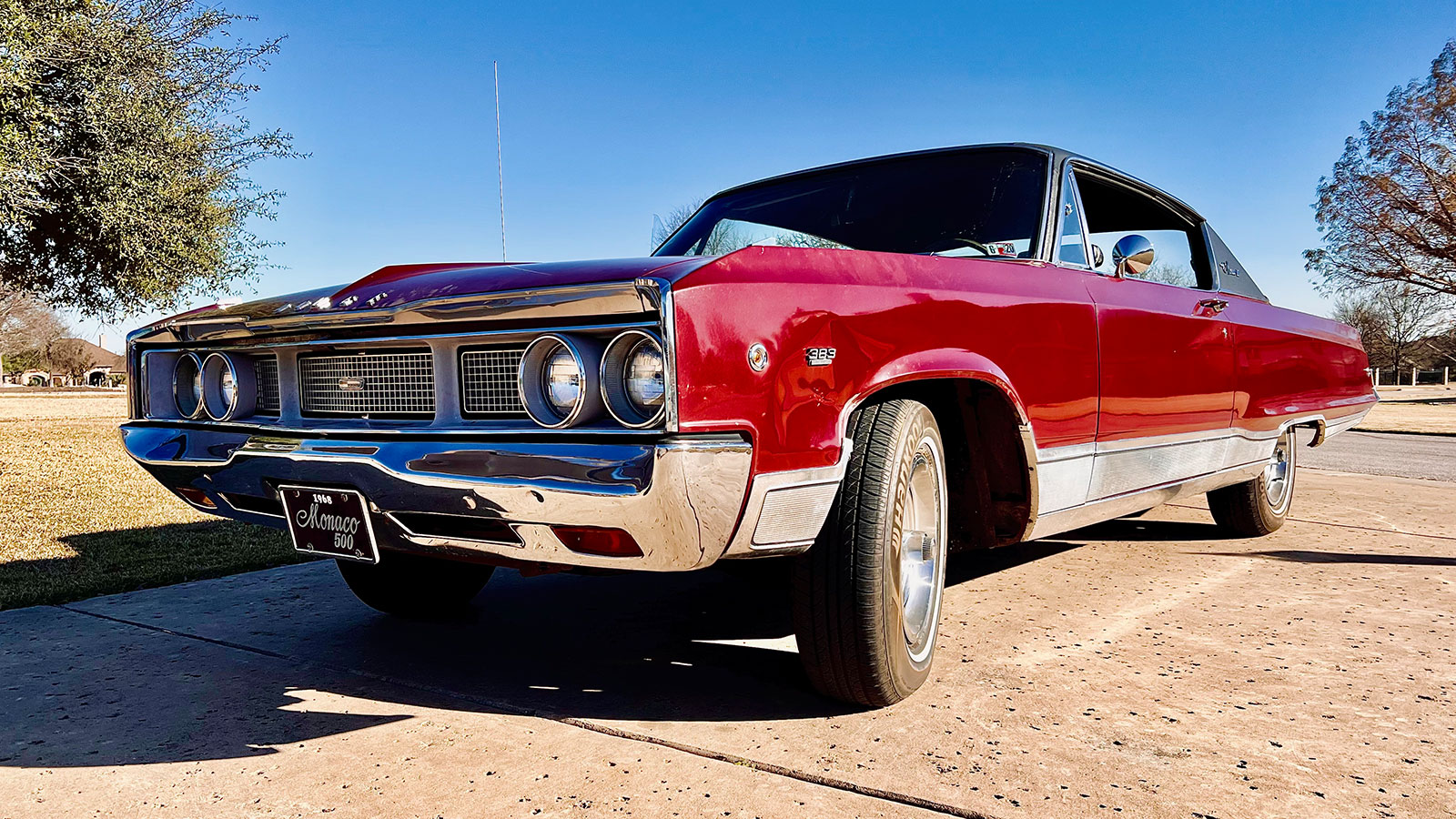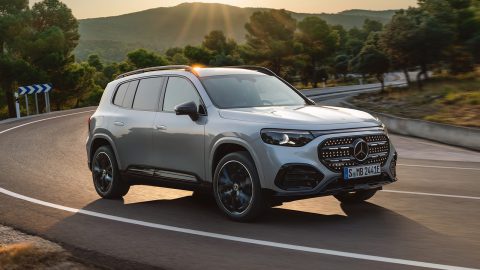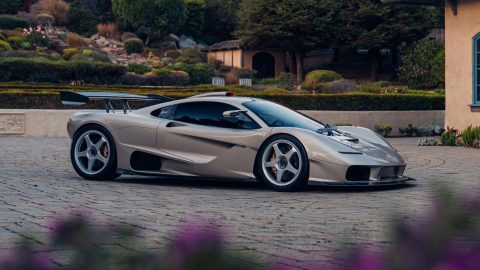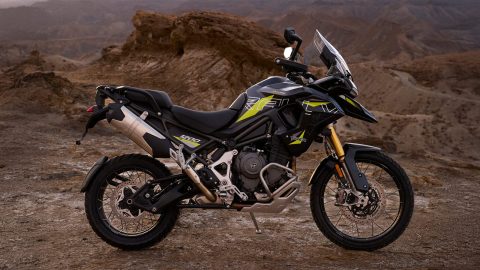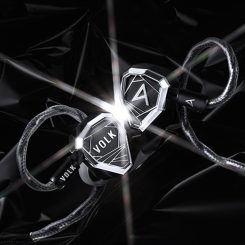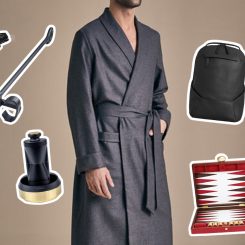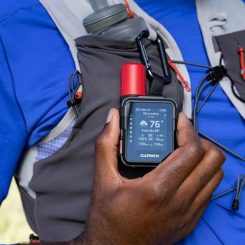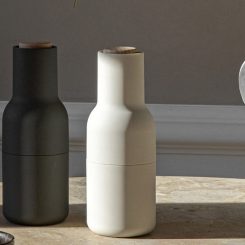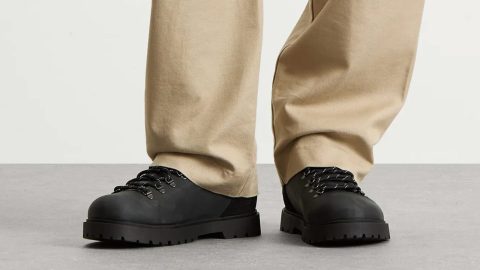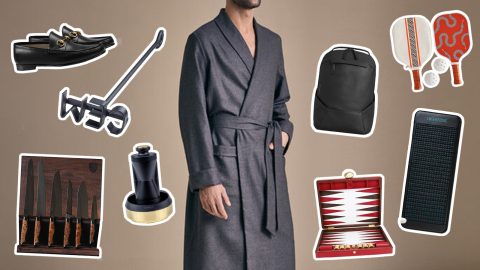Vintage cars will always struggle to compete with their modern equivalents. Subjectively, older cars may offer a more memorable driving experience but lack the latest safety and creature comforts we take for granted. However, older cars provide something modern vehicles cannot, the luxury of hindsight. Driving a vehicle from the 1960s, for example, means riding with the nostalgia and cumulative history from when it left the factory to the present time. A vintage car gives you a physical connection to the past, regardless of whether you lived through it.
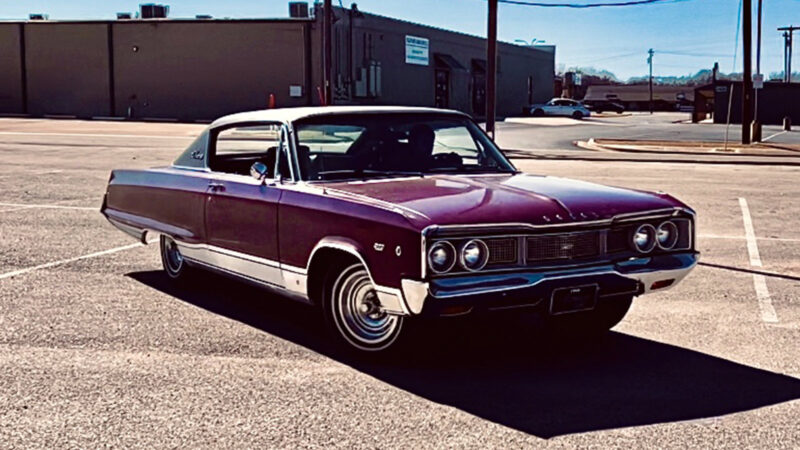
During a Sunday afternoon drive in an original 1968 Dodge Monaco 500, my fascination with automotive and American history took me on a far-out journey comparing the similarities between 1968 and 2022.
1968 Dodge Monaco 500 Barn Find
Sitting inside a car of this vintage, you are bombarded with the smells and sounds of the past. The interior stinks of delicious vinyl upholstery, as your ears buzz with sound waves from loud metal doors slamming shut and clicks from stainless steel toggle switches. This Aztec Maroon Metallic 1968 Dodge Monaco 500 was rescued from a barn by chrome hunter, and car collector, Ryan Richards. He graciously tossed me the keys to this Maroon Mopar one afternoon and told me to take it for a spin.
Driving a vehicle from the 1960s, for example, means riding with the nostalgia and cumulative history from when it left the factory to the present time. A vintage car gives you a physical connection to the past, regardless of whether you lived through it.
The car itself is pretty rare, falling into the “you don’t see these anymore” category of vehicles, especially in its current unrestored condition. It also shares a lot of its DNA with the B-body Dodge Charger, right down to the drivetrain. Under the spring-loaded hood is a 383ci V8 producing a healthy and unrestricted 330-hp thanks to its four-barrel carburetor setup. The engine sends lumps of power to the rear wheels through the now-iconic 727 TorqueFlite four-speed automatic transmission. Ryan sums up the two-door personal luxury coupe as “a Dodge Charger wearing a tuxedo.”
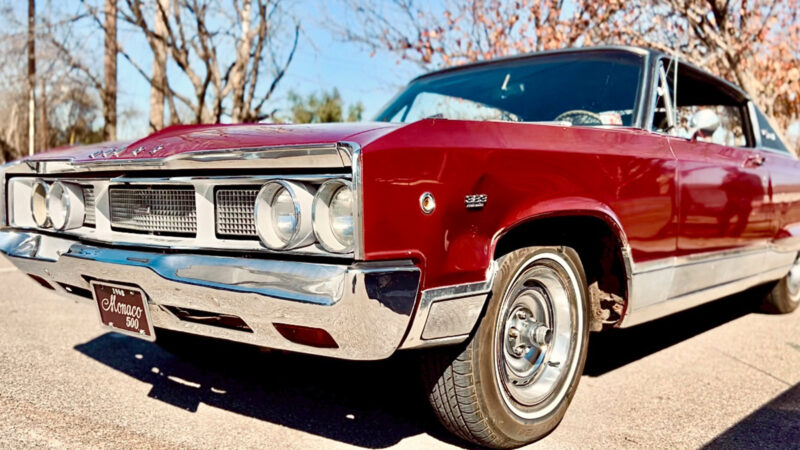
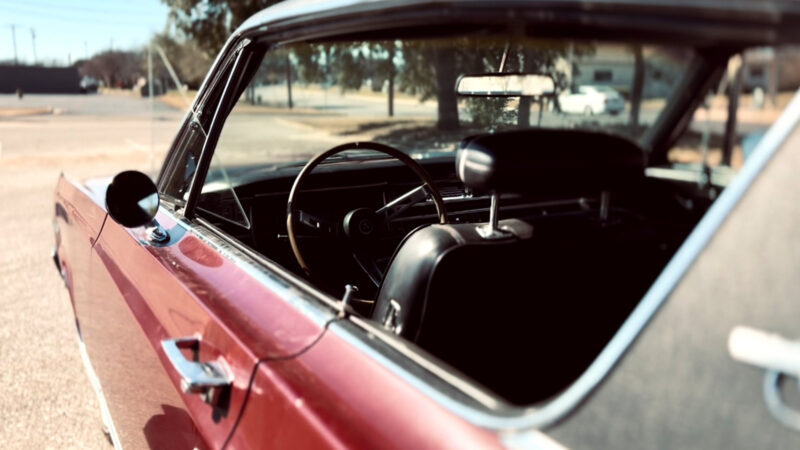
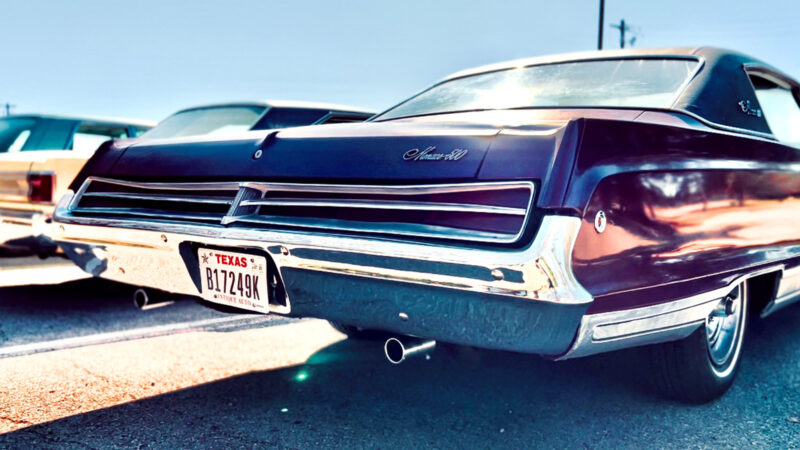
The Dodge Monaco nameplate was first introduced in 1965 as a premium model to compete against mid-level luxury entries offered by Pontiac and Mercury. By 1968, the Dodge Monaco was in the last year of its first generation. While the model shown in this article is the top-tier 500 model, available only as a two-door hardtop, Dodge offered the Monaco as a four-door sedan and station wagon. A fun fact for movie buffs, the vehicle featured in the 1980 cult classic The Blues Brothers is a 1974 Dodge Monaco police car.
A Three-Piece Suit Muscle Car
Driving a vintage car while listening to songs of its era is one of the simplest ways to travel back in time – metaphorically speaking. It’s easy to put on a pair of rose-tinted glasses, ease into the plush seat and bob your head to the sounds of the late 1960s with one hand on the wheel and your left elbow handing out the window.
The polished wood grain steering wheel turns effortlessly, requiring minimum input from your hand as you feel the 383 V8 purring like a spoiled house cat.
The polished wood grain steering wheel turns effortlessly, requiring minimum input from your hand as you feel the 383 V8 purring like a spoiled house cat. The vibrations of the engine creep up your legs and under the seat. The elegant coupe looks like it wants to cruise at 35 mph, but the engine is built to run. Low-end torque and an automatic transmission developed on the drag strip means this personal luxury coupe is only one heavy foot away from painting a set of elevens down the boulevard with tire rubber. It’s the type of car for the branch manager who worked their way from a blue-collar to a starchy white shirt but still prefers light beer over a martini. It’s a tailored suit draped over scuffed work boots.
The Rising Tensions of 1968
The year 1968 started with the U.S military launching operation Tet Offensive. This would ultimately be the turning point of the Vietnam War. News coverage of the conflict reached new heights as homes across the country saw their sons/nephews/fathers fighting an enemy they couldn’t see in a jungle on the other side of the world. That same month, a struggling band started the year under a new name, Creedence Clearwater Revival, utterly unaware of their soon-to-be contribution to the soundtrack of the late 1960s and early 70s.
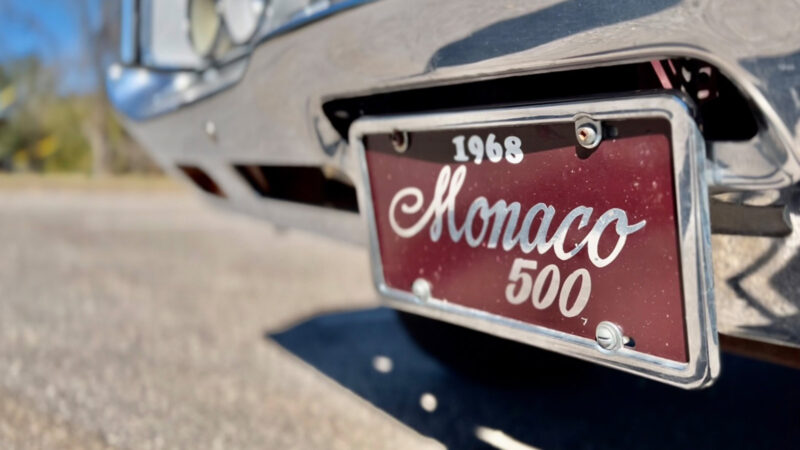
By February 1968, gallup polls found that 50 percent of Americans disapproved of President Johnson’s handling of the Vietnam War. The war everyone predicted would be over in a few months was entering its 14th year, and protests started seeing military veterans, many in wheelchairs, throwing their war medals away in support of the anti-war movement.
1968 also saw the assassination of Martin Luther King Jr. on April 4 at the Lorraine Hotel in Memphis, TN. Unrelated, the band Steppenwolf made musical history when they coined the phrase “heavy metal” playing their song “Born to Be Wild” on the TV show American Bandstand a month later on May 4. In June, the same month Creed Bratton from The Office was playing “Midnight Confessions” for The Grass Roots band, and Robert F. Kennedy was shot and killed at the Ambassador Hotel in Los Angeles, CA, on June 6, 1968.
The hot summer night and politically fueled tension created a powder keg ideal for fueling a riot. It ultimately exploded when the Chicago Police Department went to war against protestors while TV cameras rolled film capturing the brutality.
The turbulence of these violent assassinations would come to a boil at the 1968 Democratic National Convention. The hot summer night and politically fueled tension created a powder keg ideal for fueling a riot. It ultimately exploded when the Chicago Police Department went to war against protestors while TV cameras rolled film capturing the brutality. Among the victims, a young 30-year-old journalist named Hunter S. Thompson experienced the violence firsthand, being beaten, tear-gassed, and pushed through a plate-glass window.
After escaping the ordeal, Thompson arrived at the Democratic National Convention to witness politics at its ugliest. Elected leaders shouted racial slurs at each other while police beat campaign volunteers with Billy clubs in what would be the worst political convention in American history. Hunter S. Thompson would build a career on the outrage he experienced in Chicago in late August 1968.
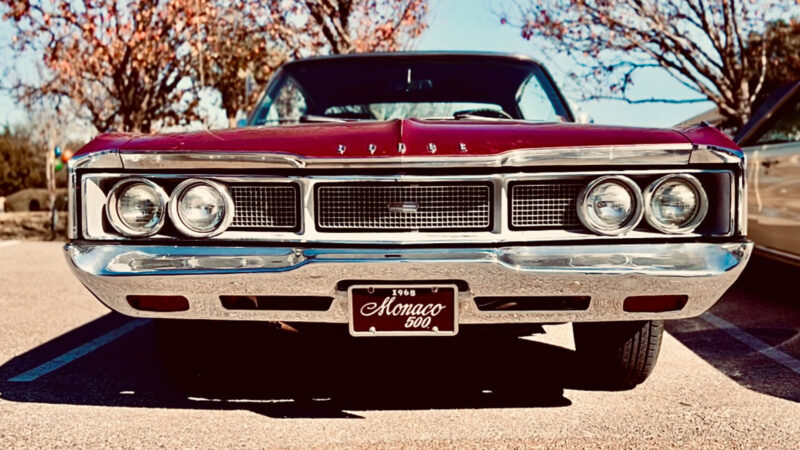
October saw the 1968 Summer Olympics hosted in Mexico City, Mexico, and it too saw controversy familiar by today’s standards. Athletes Tommie Smith and John Carlos won the gold and bronze medal, respectively, in the 200-meter sprint event. At the award ceremony, while The Star-Spangled Banner played, Smith and Carlos bowed their heads and raised a black-gloved fit to recognize the Black Power movement. Unfortunately, their silent protest resulted in both athletes being kicked off the U.S. Olympic team.
The year would come to an end with Richard M. Nixon sitting in the oval office as the 37th President of the United States in 1969. However, not before Apollo 8 astronauts Jim Lovell, Bill Anders, and Frank Borman became the first humans to reach and orbit the moon on December 21, 1968. The following year would be best remembered for the Apollo 11 Moon Landing. Yet, 1969 also saw the United States experience an economic recession that resulted in the U.S. government going off the gold standard in 1971. Meanwhile, the Vietnam War would drag on until the Fall of Saigon in 1975, but not before an oil crisis in 1973.
Parallel Lines on the Road and Time
The problems this country faced in 1968: an unpopular war, political unrest, cases of police brutality, racial tensions, inflation, recession, and talks of going into space while keeping a cautious eye on Russia. The parallels between then and now flooded my mind as I drove the 1968 Monaco 500. I found myself listening to the song “White Room” by Cream, also released in 1968, at the stoplight.
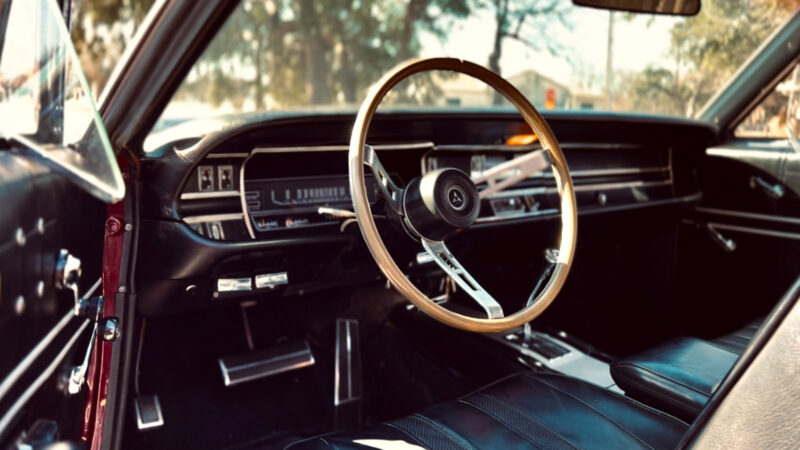
The Monaco’s straight angled body and gleaming chrome trim clashed with the bulbous aerodynamically-enforced lines of the crossover SUVs that surrounded me and the vintage muscle car. Anxiety rode shotgun, glancing at passing vehicles being driven by people on their phones. The throttle cable connecting my right foot to the 383 V8 became a coping mechanism to get away from these distracted drivers. The relief felt at 3,000 rpm.
I closed the car door and handed Ryan his keys back with a smile, while under the surface, my mind was overseeing multiple spinning plates. The joy of getting to drive an authentic V8 from the muscle-car era while pondering the philosophy that humanity is doomed to a vicious cycle of committing the same mistakes with each generation. Headlines change, but the issues do not. It can lead to a defeated way of thinking, so it’s best not to dwell on the bad and instead reflect on the slow but meaningful progress we’ve accomplished in the last 54 years.
The problems this country faced in 1968: an unpopular war, political unrest, cases of police brutality, racial tensions, inflation, recession, and talks of going into space while keeping a cautious eye on Russia.
Advances in technology, communication, and medical science have benefited humankind overall, for better or worse. If there is room for improvement, there’s always room for hope, and each new generation brings a fresh pair of eyes. However, it’s our job to show them the luxury of hindsight through comprehensive history books and letting them drive vintage cars.
I’d like to thank Ryan Richards for letting me take a spin in this 1968 Dodge Monaco 500. It was one heck of a trip.

